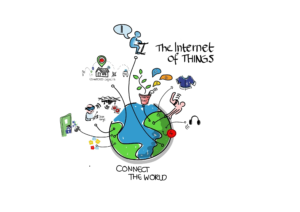The Role of Technology in Driving Global Sustainability
Technology plays a crucial role in driving global sustainability efforts. From revolutionizing renewable energy production to enabling sustainable agriculture practices, technology offers unparalleled potential in addressing global challenges and creating a more sustainable future. However, the effective implementation and application of technology require careful consideration and a proactive approach. This article explores the multifaceted role of technology in driving global sustainability, examining key areas like renewable energy, circular economy principles, and sustainable agriculture. It also discusses the challenges and opportunities associated with adopting new technologies and identifies the necessary steps to effectively integrate them into sustainable development initiatives.
The Transformative Power of Technology in Renewable Energy
Harnessing Solar Power for a Sustainable Future
Renewable energy sources, like solar and wind power, are crucial for mitigating climate change. Technological advancements have dramatically reduced the cost and improved the efficiency of solar panels, enabling wider adoption of solar energy. For example, advancements in solar panel technology have led to increased energy generation, potentially reducing reliance on fossil fuels by 50% in the coming decades.
Enhancing Energy Storage Capabilities
Effective storage solutions are vital for the successful integration of intermittent renewable energy sources. Emerging battery technologies, like lithium-ion batteries and advanced flow batteries, are crucial for storing excess energy generated by solar and wind farms. This storage capacity enables a reliable and sustainable energy supply throughout the day and night.
Smart Grid Technologies
Smart grids, equipped with advanced sensors and communication systems, facilitate real-time monitoring and management of electricity distribution. This allows for improved energy efficiency, reduced waste, and a more responsive grid system that adapts to fluctuating energy demands. Smart grid technologies help optimize energy distribution, reducing energy loss and promoting grid stability.
The Circular Economy: Reimagining Resource Management
Reducing Waste and Promoting Resource Efficiency
The traditional linear ‘take-make-dispose’ model of resource consumption is unsustainable. The circular economy, a regenerative system, focuses on minimizing waste and maximizing resource use. Technology plays a crucial role in creating closed-loop systems that recover, reuse, and recycle materials. For example, innovative recycling technologies can transform waste materials into valuable resources, significantly reducing environmental impact.
Advanced Recycling Technologies
Advanced recycling technologies, including chemical recycling and mechanical recycling, can extract valuable components from waste materials. These technologies can create new products and reduce the demand for raw materials, fostering a more sustainable and circular economy. This process reduces landfill waste and promotes responsible resource management.
Product Lifecycle Management
Digital platforms and IoT technologies allow for improved product lifecycle management. Companies can track the movement of products throughout their lifecycle, enabling better resource management and waste reduction. These systems enhance accountability and transparency, promoting ethical and sustainable practices.
Sustainable Agriculture: Feeding the World Responsibly
Precision Agriculture Techniques
Precision agriculture techniques, enabled by technology, optimize resource utilization and minimize environmental impact. Using sensors and data analytics, farmers can precisely manage inputs like water and fertilizers, leading to increased crop yields and reduced environmental harm. Smart irrigation systems conserve water resources, while automated pest control systems reduce pesticide use.
Vertical Farming
Vertical farming, which involves growing crops in stacked layers indoors, is an innovative approach to agriculture. This technology can significantly reduce land use and water consumption, while providing fresh produce year-round. It can increase crop yield and reduce transportation costs, optimizing resource utilization.
Gene Editing Technologies
Gene editing technologies, like CRISPR, can be used to develop crops that are more resilient to pests, diseases, and environmental stresses. This resilience can lead to increased crop yields and reduced reliance on pesticides, making agriculture more sustainable. This technology has potential but raises important ethical and societal questions that need careful consideration.
Policy and Collaboration: Fostering a Sustainable Future
The Role of Government Regulations
Government policies and regulations play a crucial role in promoting technology adoption and sustainable practices. Incentives, subsidies, and regulations can encourage companies to invest in sustainable technologies, reducing environmental impact. Implementing regulations can motivate individuals and businesses to adapt to more sustainable practices.
International Cooperation
Addressing global sustainability challenges demands international cooperation. Sharing best practices, knowledge, and resources across borders can accelerate the adoption of sustainable technologies and facilitate the development of effective strategies. Global collaboration is essential for addressing these large-scale problems.
Public-Private Partnerships
Public-private partnerships can leverage expertise and resources from both sectors. Partnerships can combine government funding with private sector innovation to develop and implement cutting-edge sustainability solutions. Through these partnerships, technology can be used to drive positive change.
Related Post : The Hottest Tech Trends to Watch in the Next 5 Years
Addressing Challenges and Opportunities
Balancing Economic Growth and Environmental Protection
Balancing economic growth with environmental protection is a key challenge in the adoption of technology for sustainability. Implementing sustainable practices must not compromise economic progress, but instead find ways to integrate them seamlessly. Finding this balance is critical for long-term success.
Bridging the Digital Divide
Ensuring equitable access to technology and digital literacy is critical for achieving global sustainability. Technology must be available to everyone, regardless of socioeconomic status, to fully realize its potential in driving sustainable solutions.
Managing Technological Risks
Careful consideration of the potential risks associated with new technologies is crucial for ensuring responsible development and implementation. Ethical considerations, inclusivity and potential unintended consequences must be addressed.
What are some specific examples of successful technology applications in sustainability?
Many successful examples demonstrate the power of technology in driving sustainability. For instance, the development and implementation of smart grids optimize energy distribution and reduce waste. Digital platforms for product lifecycle management help companies track the movement of products, enabling them to better manage resources and reduce waste. Successful implementations of precision agriculture techniques demonstrate how technology can improve resource efficiency and yield, while reducing environmental impact in agriculture.
How can individuals contribute to global sustainability initiatives?
Individuals can contribute in several ways. Making conscious consumption choices by choosing products with sustainable manufacturing processes can significantly reduce environmental impact. Support businesses with sustainable practices by prioritizing them. Advocate for sustainable policies and technologies by engaging in your community and supporting relevant organizations.
What are the main challenges in integrating technology into global sustainability efforts?
Challenges exist in balancing economic growth with environmental protection. Ensuring equitable access to technology and digital literacy for all is also a critical issue. Technological risks, such as unintended consequences and ethical considerations, must be properly assessed and addressed to ensure responsible innovation. Overcoming these challenges requires proactive strategies, international collaboration, and a commitment from both individuals and governments.
What future developments in technology can accelerate global sustainability?
Future developments, such as artificial intelligence (AI) and machine learning, hold significant promise. AI can optimize resource allocation in various sectors and identify patterns that predict and mitigate environmental risks. Advancements in biotechnology and nanotechnology offer new possibilities for sustainable materials and solutions. Continued research and development in these areas are crucial for accelerating progress towards a more sustainable future.
In conclusion, technology plays a pivotal role in driving global sustainability efforts. By embracing innovative solutions, fostering collaboration, and implementing impactful strategies, we can unlock a future where environmental responsibility and technological advancement intertwine. This necessitates ongoing research, policy adjustments, and active community engagement. Learn more about the critical role of technology in global sustainability today and contribute to a more sustainable tomorrow.
Share this content:














Post Comment